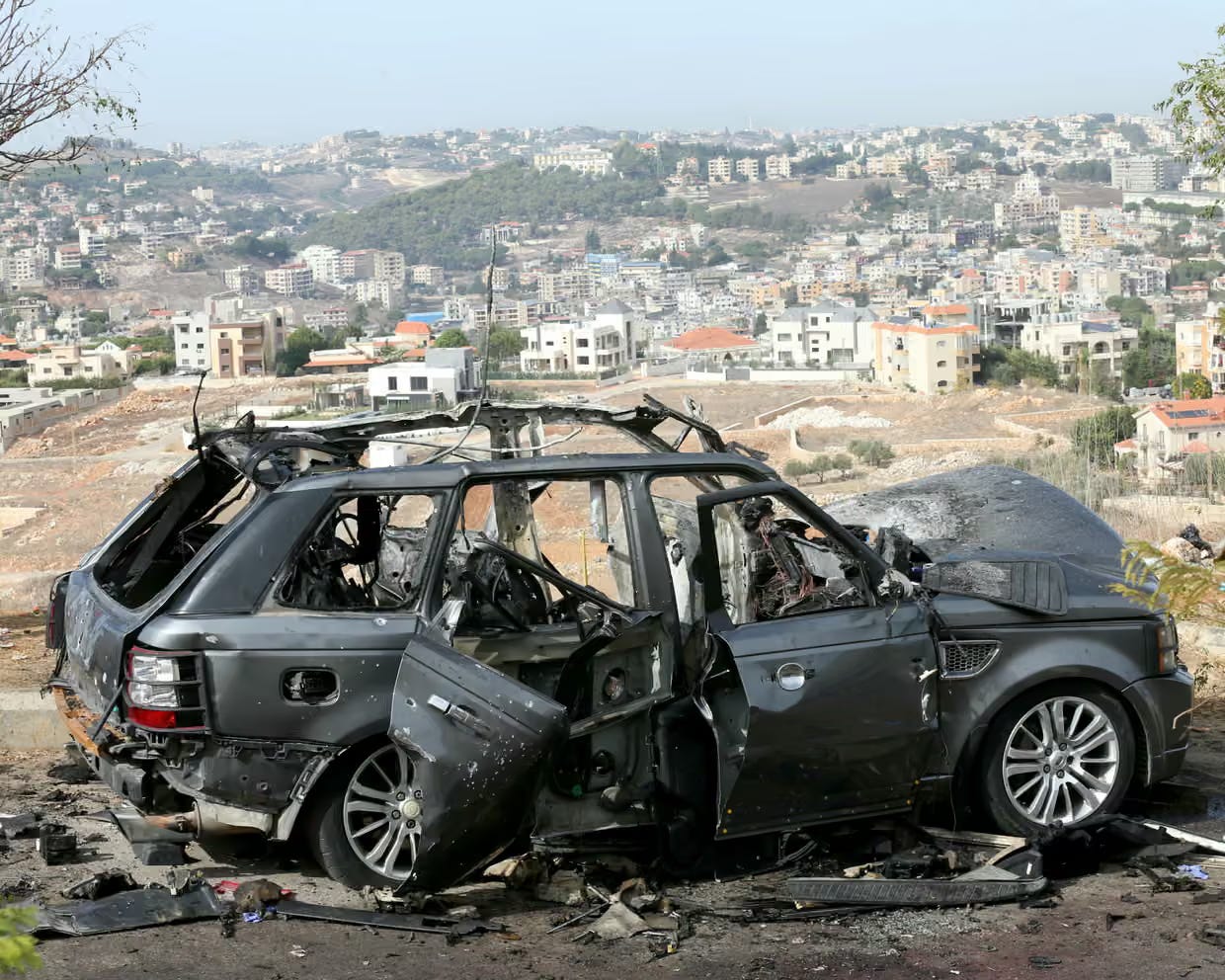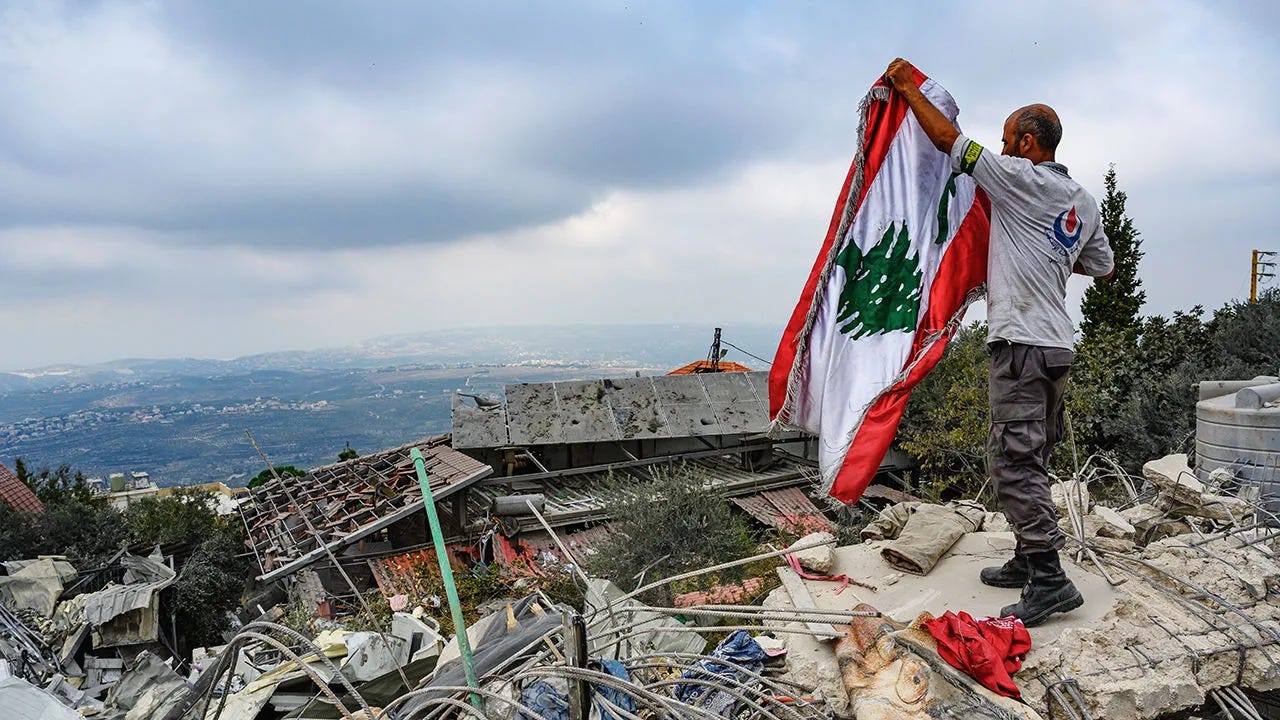The intensifying sound of Israeli air raids over southern Lebanon is now drowning out the waning echoes of political maneuvering, all amid an American tone increasingly tinged with frustration over the stalled plans to reshape the Lebanese landscape plans centered on disarming Hezbollah and reengineering the balance of power in the country.
While the official Lebanese stance, as represented by President Joseph Aoun, appears less aligned with the American vision for Lebanon’s future, Prime Minister Nawaf Salam leans toward a more aggressive approach to the security file.
Yet he has struggled to overcome institutional resistance chiefly from the Lebanese Armed Forces against direct confrontation with Hezbollah, which has openly declared its readiness for an “epic Karbala-like” battle to defend its weapons.
This internal divergence, coupled with Washington’s inability to secure a decisive political breakthrough, has tilted the Israeli calculus toward a more forceful intervention. The aim: to reimpose its agenda by force and seize what Tel Aviv views as a historic opportunity to reshape the regional order with minimal resistance.
Rising Threats and Relentless Attacks
The Lebanese front has seen a marked escalation in both field tensions and political rhetoric over recent weeks. Israel has ramped up its public threats to expand its aggression, citing Hezbollah’s alleged attempts to “rearm and rebuild its infrastructure.”

These statements have been accompanied by a surge in airstrikes both in number and intensity leaving mounting civilian and material losses across southern Lebanon.
Israeli attacks have ranged from wide-scale strikes described by Hebrew media as targeting Hezbollah’s “military infrastructure” to targeted assassinations of field operatives, as well as bombardments of residential areas, resulting in numerous civilian casualties. Simultaneously, Israeli military vehicles have been spotted moving increasingly close to border villages in southern Lebanon.
Amid the escalation, Israeli Prime Minister Benjamin Netanyahu convened a security cabinet meeting focused on Lebanon. Shortly afterward, Israel’s public broadcaster “Kan 11” quoted an Israeli official claiming that Hezbollah was “succeeding in rebuilding its offensive and defensive capabilities and restructuring its military leadership.”
These claims echoed across Israeli media, including in Yedioth Ahronoth, which reported that Hezbollah had recently managed to smuggle hundreds of short-range missiles from Syria into Lebanon. The report prompted Israel’s security cabinet to hold an emergency meeting to discuss the “repeated breach of agreements and Hezbollah’s renewed militarization,” according to the Israeli narrative.
Israeli Foreign Minister Gideon Sa’ar, in a meeting with UN envoy to Lebanon Janine Hennis-Plasschaert, warned that “Hezbollah, with Iran’s backing, continues efforts to rebuild its power,” describing it as a threat to both Israel’s security and Lebanon’s future. “Israel will not ignore this trajectory,” he said.
Meanwhile, Israeli Defense Minister Israel Katz launched a new wave of threats, accusing Hezbollah of “playing with fire” and lambasting Lebanese President Joseph Aoun for “stalling in implementing his government’s obligations to disarm Hezbollah and expel it from the south.” In a post on X, Katz vowed that Israel would continue its “maximum enforcement approach” and “not allow any threat to residents of the north.”
His threats came in the aftermath of one of the deadliest nights in southern Lebanon, during which the Israeli military targeted a civilian car in the town of Kfar Rumman (Nabatieh district), killing four young men and injuring three others. Earlier that same night, an airstrike on Kfarsir wounded another civilian.
These attacks, paired with increased military activity, reflect a clear Israeli inclination to gradually raise the level of confrontation. Lebanon has already endured a low-intensity war for over two years, marked by hundreds of Israeli strikes and a continuous violation of the ceasefire agreement signed in November 2024.
The Collapse of the Internal Conflict Gambit
Israeli strategists, with strong backing from the Trump-era American administration, had wagered that a mix of intensive airstrikes and diplomatic pressure would create a “perfect moment” to decisively weaken and subdue Hezbollah both politically and militarily.
This strategy played out on two fronts: first, giving the Israeli army near-complete freedom to operate along and across the border, effectively transforming Lebanese territory into a zone of daily air raids; second, applying relentless pressure on decision-makers in Beirut through an active US mediation effort led by envoy Thomas Barak and his deputy Morgan Ortagus, who pushed hard for a plan centered on disarming Hezbollah and reshaping Lebanon’s political scene.
In both Washington and Tel Aviv’s view, this moment would either force the Lebanese government to dismantle Hezbollah’s arsenal or trigger internal conflict between Lebanese factions. Either outcome, they believed, would ultimately favor Israel. But Lebanon’s internal dynamics and political constraints have thus far defied those expectations.
President Aoun has ruled out the use of force to disarm Hezbollah, citing the Lebanese army’s lack of capacity to confront a well-armed organization. He warned that any such move could spark a civil war.
Sources close to Aoun have reportedly said Hezbollah’s vow to defend its weapons is “not a bluff” but a serious commitment leaving any Lebanese official attempting such action exposed to catastrophic consequences.
The Lebanese army leadership has also made it clear, according to local sources, that it refuses to be tasked with forcibly disarming Hezbollah. In fact, it has conveyed that the army’s commander would rather resign than lead troops into a domestic confrontation.
Hezbollah, for its part, has enshrined this position in both its political and military rhetoric. Its leaders, particularly Secretary-General Hassan Nasrallah, have declared that disarming the group is tantamount to stripping Lebanon of its power and fulfilling Israeli demands vowing a “Karbala-style confrontation” if forced to relinquish its arms.
Together, these domestic indicators have rendered the internal conflict scenario unviable. Regional and international actors now understand that forcing Hezbollah’s disarmament through state institutions is unrealistic, and pushing Lebanon toward civil strife would carry a price too high for any party to accept especially a nation that has already suffered the ravages of a prolonged civil war.
Between Expansion and Escalation
Amid mounting tensions, the United States has been working to expand the mandate of the “Mechanism” the committee overseeing the cessation of hostilities so that it monitors all Lebanese borders, not just the southern boundary with Israel.
Arab sources link this move to recent Israeli reports alleging that Hezbollah has smuggled advanced weapons through the Syrian border. Washington now seeks to create a broader, more powerful monitoring structure under the banner of “border stability.”
But the American effort extends beyond the security realm. It aims to engineer a political breakthrough by transforming the “Mechanism” into a direct negotiation platform between Lebanon and Israel paving the way for gradual normalization or even a comprehensive political agreement, echoing other regional arrangements.
To that end, Washington has proposed including Lebanese civilian and political figures in the committee as “experts,” a move widely viewed in Lebanon as a soft entry into bypassing the military framework.
So far, this proposal has not received official Lebanese approval. Conflicting reports have emerged over the positions of the “three presidencies” (President, Prime Minister, and Parliament Speaker), each representing different sectarian and political forces.
While media coverage initially suggested the latest Mechanism meeting marked a “positive turning point,” that narrative quickly evaporated after another wave of Israeli airstrikes, including limited ground incursions and drone overflights above Beirut and its southern suburbs.
The latest Israeli escalation triggered an official outcry in Beirut. President Aoun ordered the army to respond to any Israeli ground intrusion after occupation forces gunned down a municipal worker in the southern town of Blida with dozens of bullets.
Aoun condemned the incident as part of a pattern of “Israeli aggression,” calling on the Mechanism to move beyond passive reporting and exert real pressure on Israel to halt its violations of the November 2024 ceasefire.
Israel’s military claimed the shooting came in response to an “immediate threat,” alleging the building where the worker was killed was used by Hezbollah for “terrorist activity” a claim officially rejected by Lebanese authorities and dismissed by local media as a transparent attempt to justify cold-blooded murder.
Pressure at the Edge of the Knife
The remarks by US envoy Thomas Barak cannot be seen in isolation from the growing Israeli political and military escalation. Together, these moves constitute a coordinated pressure campaign against the Lebanese state, pushing it toward one of two grim outcomes: either internal conflict with Hezbollah, or bracing for a full-scale Israeli assault.
This strategy aligns with a broader joint Israeli-American project in the Middle East, which Israeli planners believe begins with dismantling Hezbollah’s military structure. That, they argue, is the gateway to similar arrangements elsewhere especially Gaza.
In Yedioth Ahronoth, Israeli analyst Chaim Golovnich recently wrote that the November 2024 ceasefire and the formation of the Aoun-Salam government had sparked hopes for rebuilding Lebanon and disarming the resistance. According to him, that moment appeared to offer a “historic window” for transforming Lebanon.
Golovnich added that the US through envoys Tom Barak and Morgan Ortagus and in coordination with Saudi envoy Yazeed bin Farhan played a key role in shaping this new post-war reality. He asserted that Riyadh now holds significant sway over Prime Minister Nawaf Salam, who has effectively become its unofficial spokesman on governance and economic matters.
According to the article, Lebanon has now adopted what Israelis describe as a “ceasefire with assassinations” model: a state of relative calm punctuated by near-daily Israeli military operations. For Israel, this limited control is essential for deterrence. For Hezbollah, it constitutes a flagrant breach of Lebanese sovereignty. The group maintains that Israel has violated the ceasefire over 5,000 times since it was signed.
Golovnich concludes that disarming Hezbollah is now more urgent than ever, especially in light of the Gaza front. “Failure to disarm Hezbollah will upend the entire equation and likely kill off any chance of a similar outcome in Gaza,” he wrote. “Without resolution in Lebanon, there can be no resolution in Gaza. The two fronts once artificially separated have now merged into a single axis of resistance.”
From this perspective, Israel’s latest escalation can be understood as part of a comprehensive pressure strategy not just against Hezbollah, but against Lebanon’s entire political order, from allies to adversaries. The goal: force the country into a state of maximum tension and reposition disarmament as the nation’s central issue.
That said, it does not necessarily mean that Israel is preparing for an all-out war like the one that erupted last year. More likely is a strategy of “escalating fire,” gradually intensifying air raids and expanding its target list in southern Lebanon, with the aim of increasing human and material losses incrementally.
Through this approach, Israel hopes that destruction and bloodshed will trigger the political shift it seeks or at the very least, push Lebanon and its allies to revisit the ceasefire deal and accept a new agreement better aligned with Israeli security and political demands.



